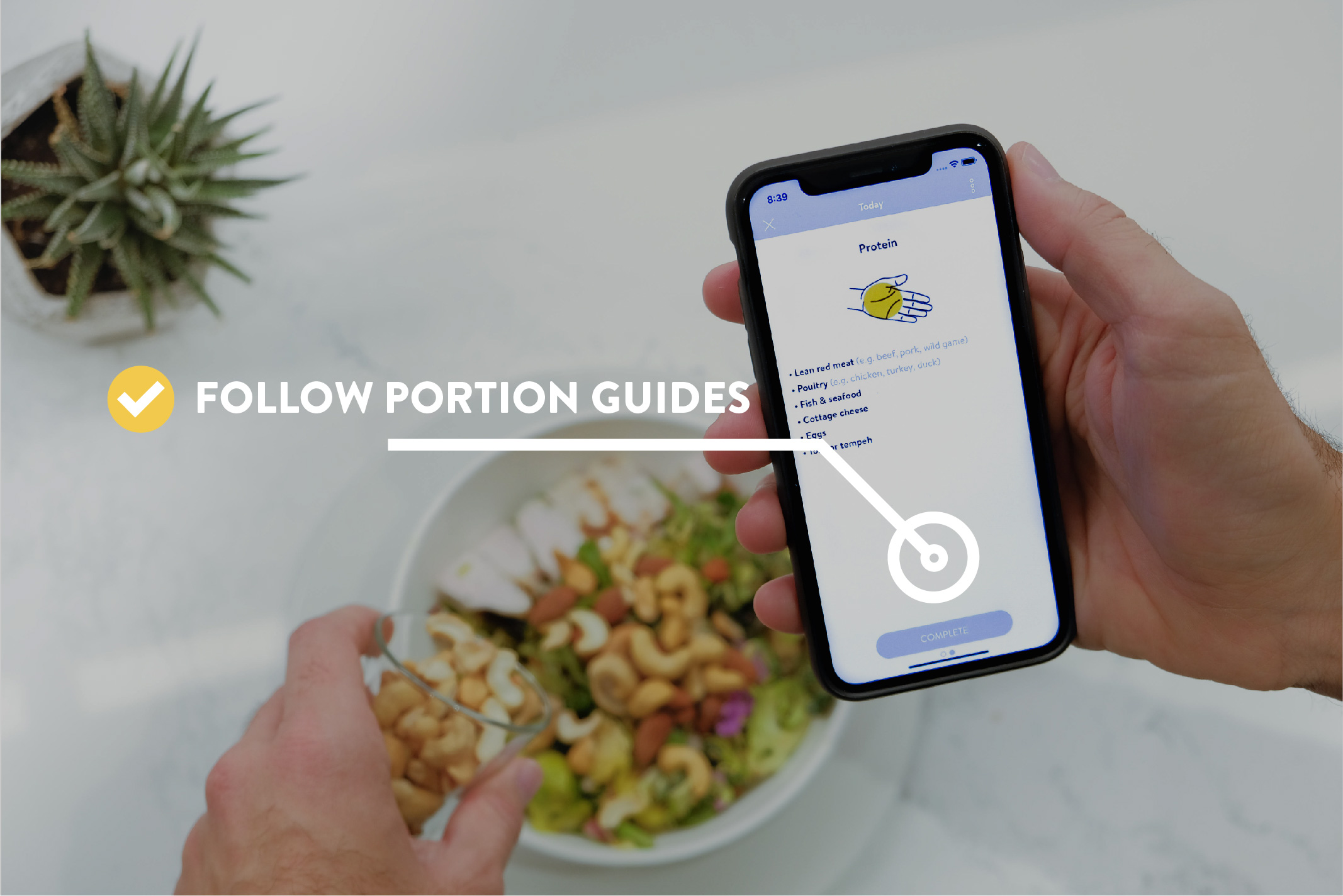There can be a lot of contention between trainers, coaches, kinesiologists, nutritionists, and dietitians when the topic of food portions comes up. To remain as politically correct as possible, the goal here will be to convey what the majority of contemporary scientific literature supports to date. Additionally, to keep the discussion of this habit in check, we’re not going to consider those with specific allergies or intolerances to certain foods. At the end of the day though, this habit is open to coach however you wish, given the scope of your certification you hold.
Regardless of whether you follow a portion guide set out by Harvard University [1], Precision Nutrition [2], The American Heart Association [3], or any of the hundreds of national guidelines set forth in the world, there are a few underlying themes that persist amongst all of them.
Commonalities across most portion guides
One common thread is that plant-based foods should comprise the majority of your plate.4 This includes foods in the form of whole grain, as well as a source for fats via nuts and oils, and of course, fruits and vegetables. A portion of lean meats (fish is typically suggested) is also commonly suggested, but is dependant on the diet of topic and can be replaced by other sources of protein (for example plant-based, or even dairy). Also generally suggested by the majority of food guides worldwide is a variety of foods [4]. How each guide determines a food group, or category of food to include as a portion on your plate varies. But variety is the spice of life, and greatly increases the odds of getting all your macronutrients and micronutrients!
Why is a portion guide even necessary?
Ultimately food guides and their associated portion plates (like ChooseMyPlate.gov) are made to help simplify healthy eating for people. And your clients are no different. Early adopters of the My Plate program did so because they found it easy to use and understand [5]. This makes sense, as there are fewer barriers to action.
There is also some evidence that when plate guided portions are done on smaller plates, fewer calories are consumed [6] with a greater perception of fullness [7]. For those of your clients hoping to lose weight, this is a hack and a half.
Portioning foods into habits
The same principle of making healthy eating easy can be said when it comes to helping your clients build habits. Using visual guides through Trainerize’s attachment feature provides your client access to the visual representation of whatever portion guide you wish them to follow.
You can also send auto-messages from Trainerize’s calendar, detailing healthy food portioning information. A study demonstrated that sending electronic information (via text) about food groups and food portioning increased the healthy eating habits of college students [8].
In-app educational support should help your clients better understand what they should be doing when it comes to portioning food. The habit tracking feature can help you both see how well they can execute that knowledge. Keep that habit streak of perfectly portioned food going!
Portion guides in a nutshell:
- Food portion plate guides help simplify eating for people.
- Common threads include primarily plant-based foods, a portion of protein, and variety of foods and food groups.
- Building a habit with your clients is easy if you leverage Trainerize app features like file attachments, auto messaging, and habit tracking.
References:
- https://www.hsph.harvard.edu/nutritionsource/healthy-eating-plate/
- https://www.precisionnutrition.com/pn-my-plate
- Alice H. Lichtenstein, DSc, FAHA, Chair , Lawrence J. Appel, MD, FAHA, Vice-Chair , Michael Brands, PhD, FAHA , Mercedes Carnethon, PhD , Stephen Daniels, MD, PhD, FAHA , Harold A. Franch, MD, FAHA , Barry Franklin, PhD, FAHA , Penny Kris-Etherton, RD, PhD, FAHA , William S. Harris, PhD, FAHA , Barbara Howard, PhD, FAHA , Njeri Karanja, PhD , Michael Lefevre, PhD, FAHA , Lawrence Rudel, MD, PhD, FAHA , Frank Sacks, MD, FAHA , Linda Van Horn, PhD, RD, FAHA , Mary Winston, EdD , and Judith Wylie-Rosett, EdD, RD. (2006). A Scientific Statement From the American Heart Association Nutrition Committee. Circulation, Vol 114, no. 1; 114:82–96
- Anna Herforth, Mary Arimond, Cristina Álvarez-Sánchez, Jennifer Coates, Karin Christianson, Ellen Muehlhoff, A Global Review of Food-Based Dietary Guidelines, Advances in Nutrition, Volume 10, Issue 4, July 2019, Pages 590–605, https://doi.org/10.1093/advances/nmy130
- https://www.choosemyplate.gov/
- Barbara J Rolls, Erin L Morris, Liane S Roe, Portion size of food affects energy intake in normal-weight and overweight men and women, The American Journal of Clinical Nutrition, Volume 76, Issue 6, December 2002, Pages 1207–1213, https://doi.org/10.1093/ajcn/76.6.1207
- Tanja V.E.Kral. (2006). Effects on hunger and satiety, perceived portion size and pleasantness of taste of varying the portion size of foods: A brief review of selected studies. Appetite Volume 46, Issue 1: Pages 103-105
- Onikia N. Brown , PhD, RD, Lauren E. O’Connor , BS & Dennis Savaiano , PhD. (2014). Mobile MyPlate: A Pilot Study Using Text Messaging to Provide Nutrition Education and Promote Better Dietary Choices in College Students. Journal of American College Health Volume 62, 2014 – Issue 5. Pages 320-327

